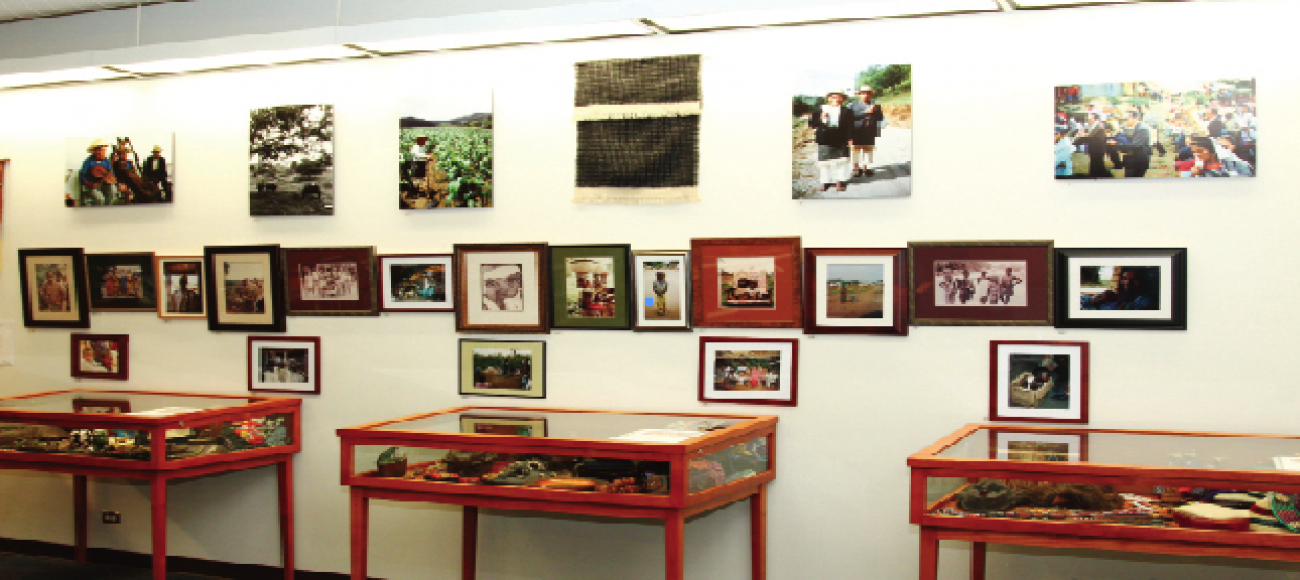Matt Brooks
Writer
The Davidson Library is a study hall where UCSB students can read for class, meet up with study groups, or use the couches to catch up on sleep. However, the library also offers other valuable opportunities for research and study. Other than the myriad of books, there are also numerous historical artifacts, photos, and maps on display as well as sound recordings, videos, and eBooks.
Lucia Snowhill, Co-Acting University Librarian and Associate University Librarian for Collections, said that the library has 167,500 sound recordings and 900,055 digitized items in stock.
The Special Collections Department houses an array of rare artifacts, digital collections, and books, most of which are only on display for a limited time. For example, from September 9 through October 31 there was an exhibition of highlights from book and manuscript collections, including photos of Santa Barbara’s aviation history and a mail art (art that uses the postal system as a form of display) collection that was donated.
“The Special Collections Department is the most interesting part of the library, but most undergrads don’t take advantage of the resources and they should,” Special Collections Curator David Seubert said.
Special Collections is located on the third floor of the library, and while many of us may have never seen the third floor—except for maybe a brief glimpse when the elevator doors open to let people in—it is definitely worth your while to venture up there and see what it has to offer.
One of the main culprits behind the pervasive lack of awareness or interest in these viable learning resources is the Internet. Think of your last research paper or project. How many of your sources were taken from the Internet? The answer is probably most, if not all.
With information on almost any topic just a click away on Google, students don’t see the need to seek out alternative research tools, like books from the library. It’s now hard to imagine a world without the Internet as a resource, but just a few decades ago your research tools would have been almost exclusively limited to what could be found in a local or campus library.
The modern luxury of easy access to information has changed the quality of the learning experience we receive. While there are credible academic sources available online, most students use less reliable ones, like Wikipedia, that act as the “fast-food” of scholarly sources by providing convenience over quality.
This is not to say the Internet’s place in education is a bad thing, just that it can’t replace some things. Reading a poorly written wiki summary about Amelia Earhart’s ill-fated attempt to cross the Atlantic solo by plane doesn’t compare to seeing an authentic piece of history, like the photo of her standing on top of the Lockheed Electra airplane which was on display in the Special Collections Department. The photo is a more tangible experience that allows you to come into personal contact with the past and gain a greater appreciation for it. Convenience shouldn’t be the main criteria we go by when looking to obtain knowledge.
Now is the perfect time to start using the library’s full capacity of learning resources, as the library will soon be celebrating the acquisition of its three-millionth volume. Assistant Librarian
Brian Matthews explained that every millionth volume is a traditional milestone for all libraries and the selection of which book to use as the milestone marker is a special event. Matthews said that the Davidson Library staff wanted to do something unique with their selection.
“When research libraries typically celebrate a millionth volume, they often select something old, like a first edition of Moby Dick or some type of historical atlas,” Matthews said. “We selected an artist’s book because this enables is to look back at the history of books, while also looking ahead into what books might become.”
The book they finally chose is Tree by Charles Hobson, an artist who explores the book itself as an aesthetic art form. There will be a public celebration on Tuesday, November 9 and Hobson will give a public lecture on Wednesday, November 10.
Photo By: Eugene Ho












Comments are closed.